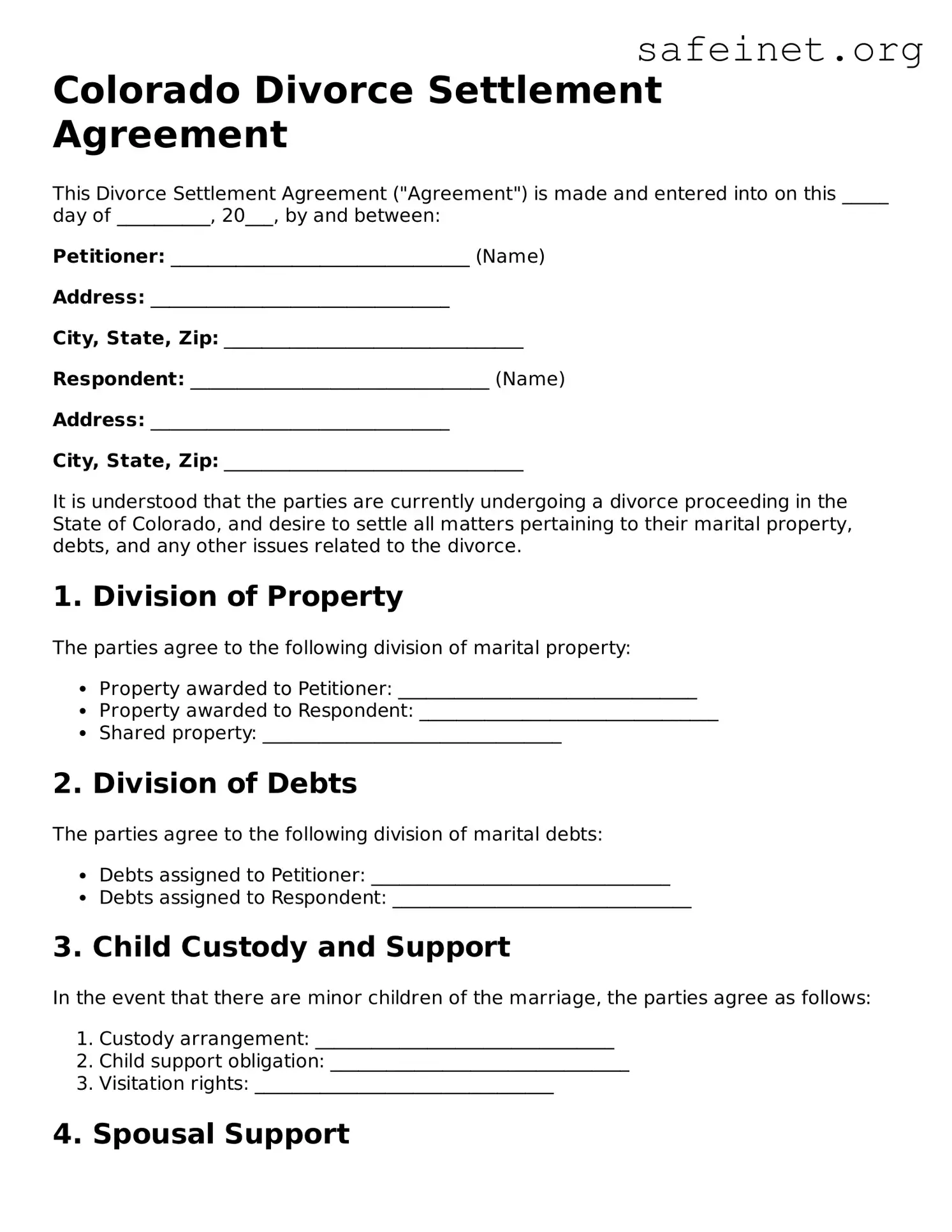Colorado Divorce Settlement Agreement
This Divorce Settlement Agreement ("Agreement") is made and entered into on this _____ day of __________, 20___, by and between:
Petitioner: ________________________________ (Name)
Address: ________________________________
City, State, Zip: ________________________________
Respondent: ________________________________ (Name)
Address: ________________________________
City, State, Zip: ________________________________
It is understood that the parties are currently undergoing a divorce proceeding in the State of Colorado, and desire to settle all matters pertaining to their marital property, debts, and any other issues related to the divorce.
1. Division of Property
The parties agree to the following division of marital property:
- Property awarded to Petitioner: ________________________________
- Property awarded to Respondent: ________________________________
- Shared property: ________________________________
2. Division of Debts
The parties agree to the following division of marital debts:
- Debts assigned to Petitioner: ________________________________
- Debts assigned to Respondent: ________________________________
3. Child Custody and Support
In the event that there are minor children of the marriage, the parties agree as follows:
- Custody arrangement: ________________________________
- Child support obligation: ________________________________
- Visitation rights: ________________________________
4. Spousal Support
The parties agree to the following terms regarding spousal support:
Amount: ________________________________
Duration: ________________________________
5. Miscellaneous Provisions
This Agreement includes provisions for:
- Transfer of title: ________________________________
- Tax implications: ________________________________
- Future disputes resolution: ________________________________
This Agreement shall be governed by the laws of the State of Colorado. Both parties acknowledge that they have read and understand this Agreement and that they are entering into it voluntarily.
IN WITNESS WHEREOF, the parties hereto have executed this Divorce Settlement Agreement on the day and year first above written.
Petitioner Signature: ________________________________
Date: ________________________________
Respondent Signature: ________________________________
Date: ________________________________
